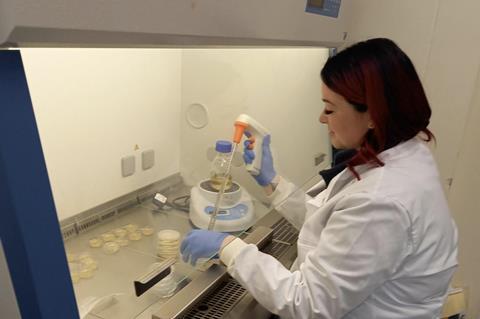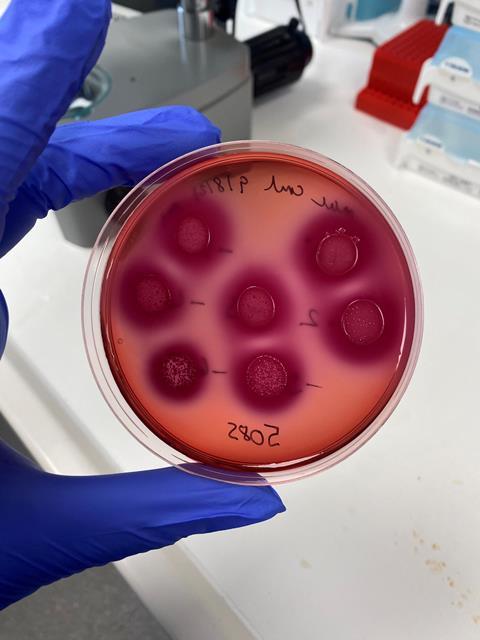Megan Cameron (27) from Aberdeenshire, a BSc (Hons) Agriculture at SRUC Craibstone, undertook an Applied Microbiology International-sponsored Summer Placement examining the effects of feeding different strains of E. coli to the free living wild type nematode, Caenorhabditis elegans.
Her placement was undertaken at SRUC Craibstone with Dr Nicola Holden and the project was called ’What threat does carriage of cytolethal distending toxin (CDT) in environmental Escherichia spp. Isolates pose to public health?’

She says:
In summary, I spent the eight week project looking at the effects of feeding different strains of E. coli to the free living wild type nematode Caenorhabditis elegans.
Firstly, I was given the unique opportunity to learn how to maintain and propagate the nematodes from experts based at the Institute of Medical Sciences, University of Aberdeen. From these lessons I was able to continue my work at SRUC Craibstone, expanding my knowledge in both nematology and bacteriology as well as general lab skills.
The project saw me undertake the basics such as monitoring feeding behaviours, effects of temperature and overcrowding on nematode plates, while also undertaking more advanced protocols such as preparing embryos for RNAi experiments – used to sterilise contaminated cultures, which was required after a fungal infection developed on the nematode plates.

The main aim of the project was to develop an ingestion assay and review any effects from feeding different strains of either CDT positive (5085) or CDT negative (OP50) E. coli on the nematodes.
From the ingestion assay it was observed that the nematodes that were challenged with the CDT positive strain were more sluggish when compared to those who were fed the CDT negative strain.
READ MORE: Special issue on Agriculture & the Rhizospere
Obvious differences were also observed after recovering the ingested bacteria from both the CDT positive and CDT negative challenged worms.
This showed that the CDT positive strain survived being ingested by the nematodes, suggesting they could be deposited back into the soil environment. This then becomes an issue for public health as the toxins could be transferred from the soil into the food chain causing detrimental effects to animal and public health.

My least favourite job in the lab was setting up the PCR! Everything is in such small quantities and I always worry that because of that there won’t be enough DNA or primers for it to work properly.
Next, I am off to do a PhD at the University of Aberdeen looking at the topic “Why is water saving so challenging in Bangladesh rice production?”. I am excited to continue looking at plant science and food production which really interests me as I come from an agricultural background, but I am also nervous for the new beginning!







No comments yet